In Maryland, nine fascinating hawk species grace the skies, each contributing to the state’s vibrant ecosystems in unique ways.
These birds of prey, ranging from the iconic Red-Tailed Hawk to the agile Cooper’s Hawk and the distinctive Osprey, play integral roles in maintaining ecological balance.
As we delve into the lives of these majestic hunters, we’ll explore their diverse habitats, hunting strategies, and migratory patterns.
From the dense woodlands to open fields and coastal regions, Maryland’s landscapes provide a rich tapestry for these hawks to thrive.
Join us on a journey through the avian wonders of Maryland, where these nine hawk species showcase the state’s biodiversity and underscore the importance of conservation efforts to ensure their continued presence in our skies.
9 Hawks in Maryland
Let’s discover their habitats, behaviors, and contributions to Maryland’s diverse ecosystems. Here are the 9 Hawks in Maryland:
1. Red-Tailed Hawk
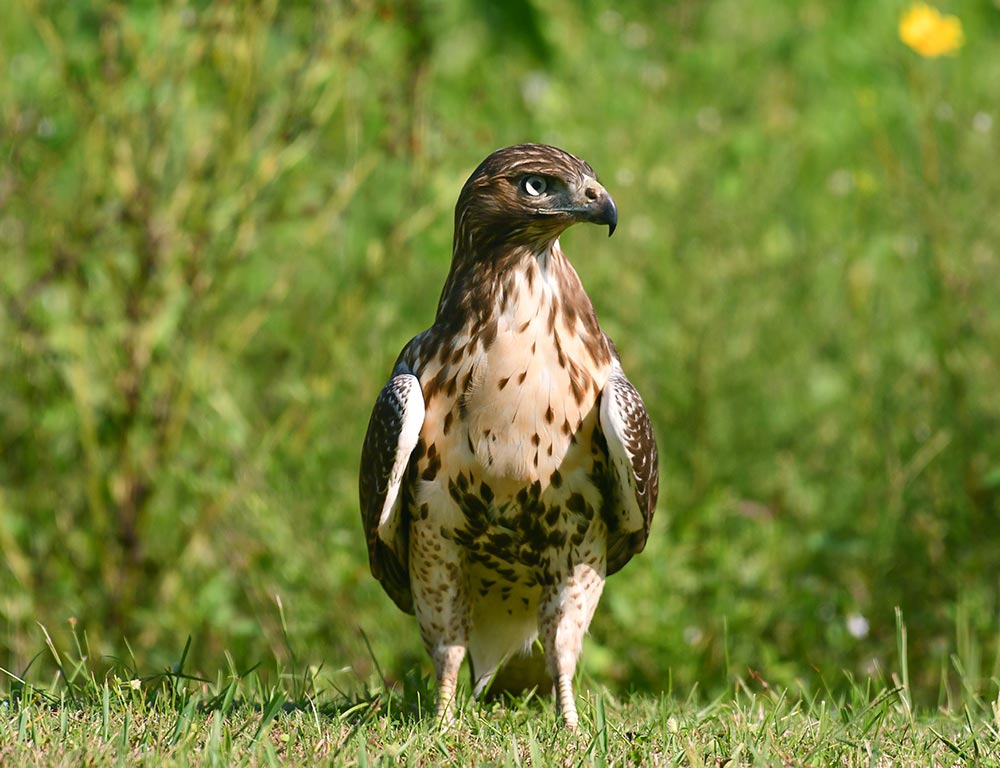
- Scientific name: Buteo jamaicensis
- Population: Common and widespread in Maryland
- Life span: Up to 21 years
- Size: Length of 18 to 26 inches
- Weight: 2 to 4 pounds
- Food: Rodents, small mammals, birds
- Wingspan: 43 to 57 inches
The Red-Tailed Hawk, characterized by its striking rust-coloured tail, is a prominent raptor in Maryland’s skies. With a broad wingspan and keen eyesight, it is a skilled hunter.
These hawks are adaptable and can be found in various habitats, from open fields to wooded areas. Red-tailed hawks are known for their soaring flight, utilizing thermal updrafts to cover large territories in search of prey efficiently.
Their diet mainly consists of rodents like mice and voles, but they can also catch birds.
These hawks are territorial during the breeding season, often using the same nesting site for multiple years. Their nests are constructed high in trees and may be reused or renovated annually.
Red-tailed hawks are monogamous and form strong pair bonds. Their longevity and adaptability contribute to their success in diverse ecosystems across Maryland.
2. Cooper’s Hawk
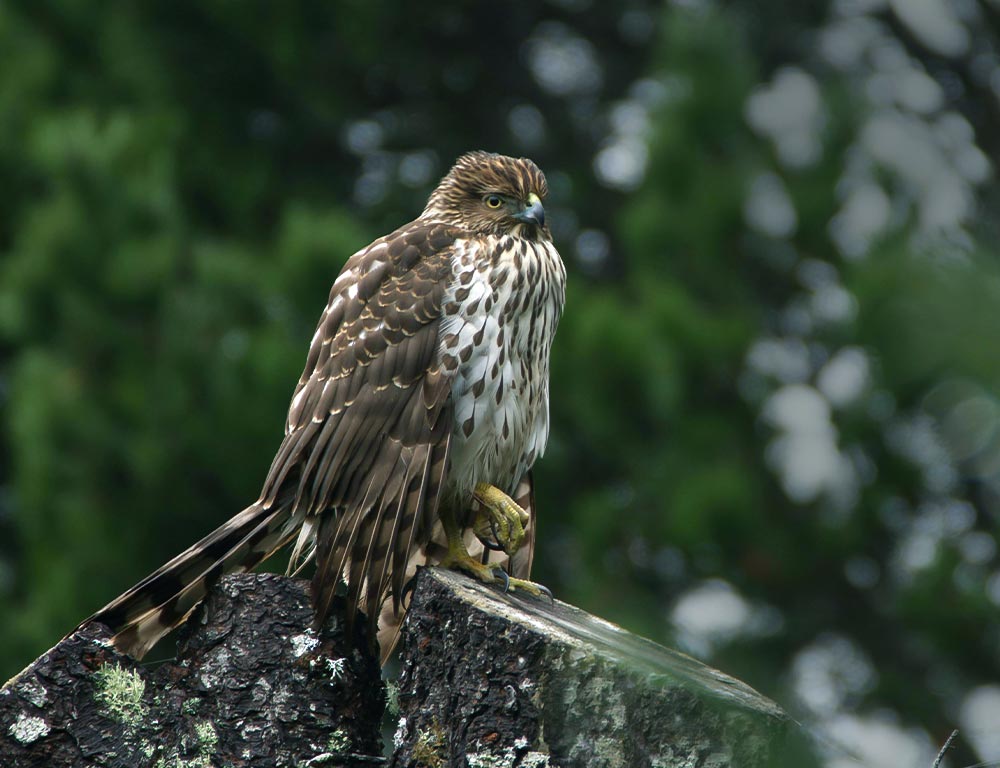
- Scientific name: Accipiter cooperii
- Population: Common, especially in wooded areas
- Life span: Up to 12 years
- Size: Length of 14 to 20 inches
- Weight: 8 to 24 ounces
- Food: Birds, small mammals
- Wingspan: 24 to 35 inches
The Cooper’s Hawk is a medium-sized hawk recognized for its agility and ability to navigate through dense forests with remarkable speed. With its sleek build and long tail, this bird is well-adapted for manoeuvring through wooded landscapes in pursuit of prey.
Cooper’s Hawks primarily feed on birds, relying on surprise attacks with a sudden burst of speed. Their short, rounded wings allow them to make quick turns and pursue agile prey through complex environments.
During the breeding season, these hawks construct nests in trees, often concealed within dense foliage. They are known for their courtship displays involving aerial acrobatics and mutual vocalizations.
While they face some threats, including habitat loss and collisions with structures, Cooper’s Hawks have demonstrated resilience in adapting to suburban environments, where they may even utilize backyard bird feeders as hunting grounds.
3. Sharp-Shinned Hawk

- Scientific name: Accipiter striatus
- Population: Common, especially in forested areas
- Life span: Up to 10 years
- Size: Length of 9 to 13 inches
- Weight: 3 to 7 ounces
- Food: Birds, small mammals
- Wingspan: 16 to 22 inches
The Sharp-Shinned Hawk is the smallest of the three, characterized by its compact size and short wings. These hawks are agile fliers, easily navigating through dense vegetation.
Known for their exceptional speed and precision, Sharp-Shinned Hawks are specialized bird hunters, preying on small songbirds and occasionally small mammals.
During the breeding season, they build nests in trees, often hidden in the canopy. Sharp-shinned hawks are highly migratory, with many individuals travelling significant distances during the winter months.
Their population density is influenced by the availability of suitable habitat and prey resources. In suburban and urban areas, these hawks may utilize backyard bird feeders as a convenient food source.
Despite their small size, sharp-skinned hawks play a crucial role in maintaining ecological balance by controlling populations of smaller birds and rodents.
4. Broad-Winged Hawk
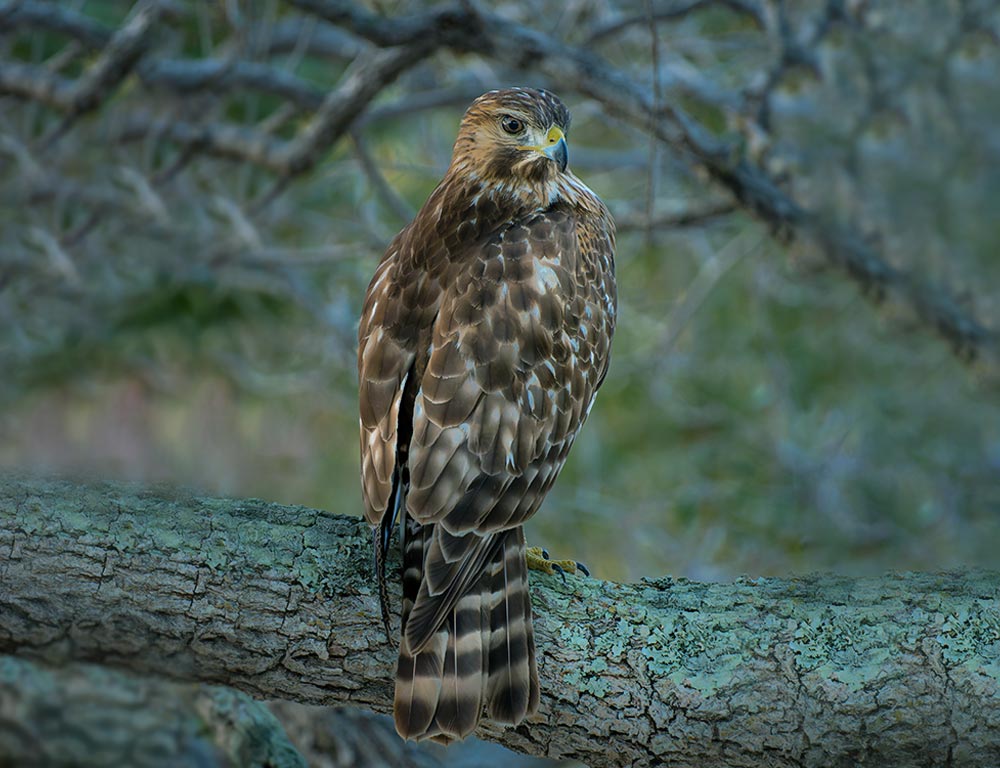
- Scientific name: Buteo platypterus
- Population: Common during migration, less common in winter
- Life span: Up to 7 years
- Size: Length of 13 to 17 inches
- Weight: 9 to 20 ounces
- Food: Small mammals, amphibians, reptiles, birds
- Wingspan: 31 to 39 inches
The Broad-Winged Hawk is known for its distinctively broad wings and is a migratory species in Maryland. During the breeding season, they inhabit dense deciduous forests, building nests high in trees.
They embark on an impressive migration come fall, often in large flocks known as “kettles.”
Their migration patterns take them through Maryland, making them a common sight during this season. Broad-winged hawks are skilled hunters, preying on various small animals, including mammals, amphibians, reptiles, and other birds.
Despite being smaller than some other hawks, Broad-Winged Hawks play a crucial role in maintaining ecological balance.
Their migratory behaviour is a spectacle for bird enthusiasts as large groups soar together, utilizing thermal currents to cover vast distances.
5. Rough-Legged Hawk
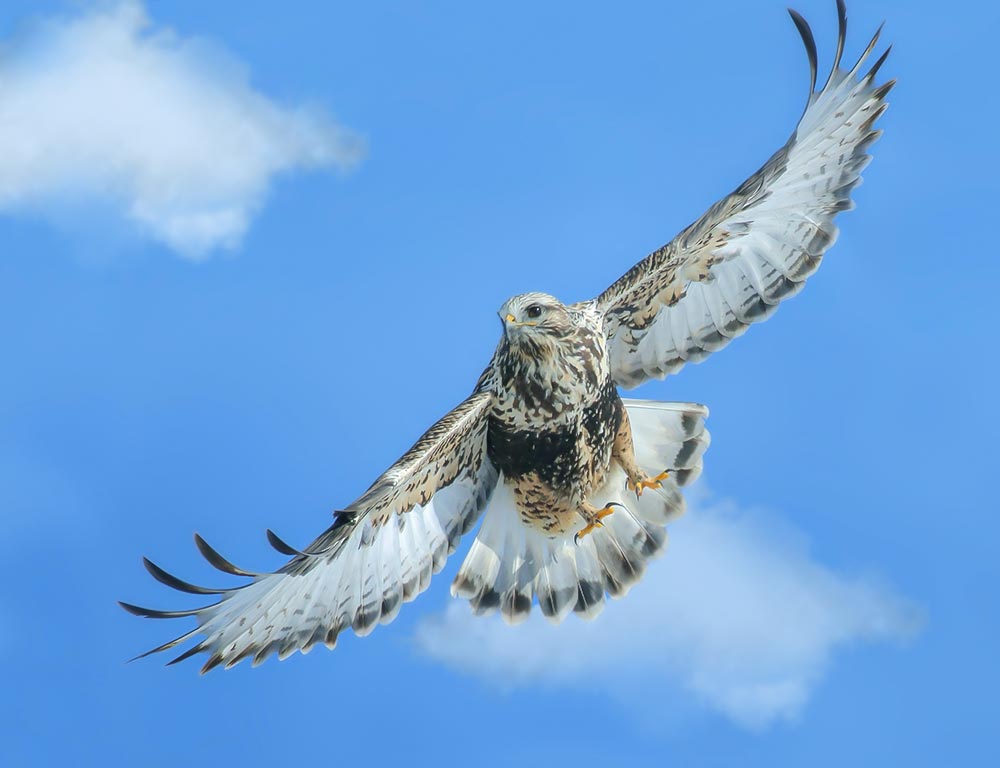
- Scientific name: Buteo lagopus
- Population: Occasional winter visitor
- Life span: Up to 10 years
- Size: Length of 18 to 24 inches
- Weight: 1.5 to 3.5 pounds
- Food: Small mammals, birds
- Wingspan: 52 to 54 inches
The Rough-Legged Hawk is aptly named for its feathered legs, a distinctive feature that sets it apart from other hawks. These hawks are well-adapted to cold climates and are occasional winter visitors to Maryland.
Their preferred habitats include open fields, grasslands, and marshes. Rough-legged hawks are often seen perched on utility poles or hovering in search of prey.
Unlike many other hawks, Rough-Legged Hawks have a varied diet that includes small mammals and birds. Their feathered legs provide insulation against the cold, allowing them to hunt effectively in chilly environments.
During the breeding season, they nest on cliffs or rocky outcrops in the Arctic tundra. In winter, they may travel south searching for food, making them a fascinating addition to Maryland’s avian visitors.
6. Northern Goshawk
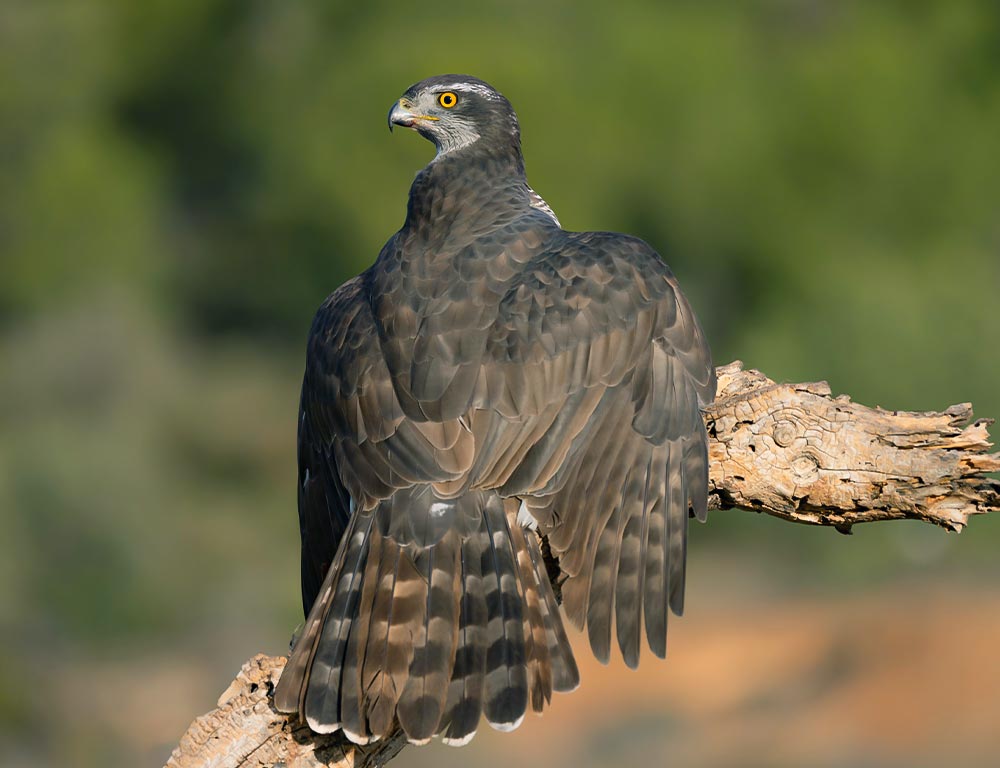
- Scientific name: Accipiter gentilis
- Population: Resident breeder, uncommon
- Life span: Up to 15 years
- Size: Length of 20 to 26 inches
- Weight: 2 to 4 pounds
- Food: Birds, mammals, occasionally reptiles
- Wingspan: 40 to 46 inches
The Northern Goshawk is a powerful and secretive hawk that is a Maryland resident breeder but considered uncommon. These hawks inhabit mature forests and are known for their elusive nature.
Northern Goshawks are expert hunters, preying on birds and mammals with precision and speed. They have many habitats, from dense coniferous forests to mixed woodlands.
These hawks are territorial during the breeding season, constructing nests high in trees. They are known for their aggressive defence of their nests and can be formidable predators in their ecosystems.
Northern Goshawks are adapted for swift, agile flight through dense forest canopies. Their presence in Maryland’s ecosystems highlights the importance of preserving mature forests as vital habitats for these majestic birds of prey.
7. Northern Harrier

- Scientific name: Circus hudsonius
- Population: Common in open habitats
- Life span: Up to 16 years
- Size: Length of 18 to 24 inches
- Weight: 10 to 26 ounces
- Food: Small mammals, birds, reptiles
- Wingspan: 40 to 48 inches
The Northern Harrier, also known as the “Marsh Hawk,” is a distinctive raptor found in open habitats such as marshes, grasslands, and agricultural fields.
Identified by its facial disk resembling an owl, this harrier has a unique hunting style. It hovers low over the ground during flight, scanning for prey with keen eyesight and listening for movement sounds.
Northern Harriers primarily feed on small mammals, birds, and occasionally reptiles. They are known for their agility and adaptability in hunting across diverse landscapes.
Breeding pairs construct nests on the ground in dense vegetation, providing cover and protection for their chicks. Northern Harriers are migratory, with some individuals traveling long distances during winter.
Their presence in Maryland’s open spaces contributes to the ecological balance by controlling populations of small mammals and birds.
8. Red-Shouldered Hawk
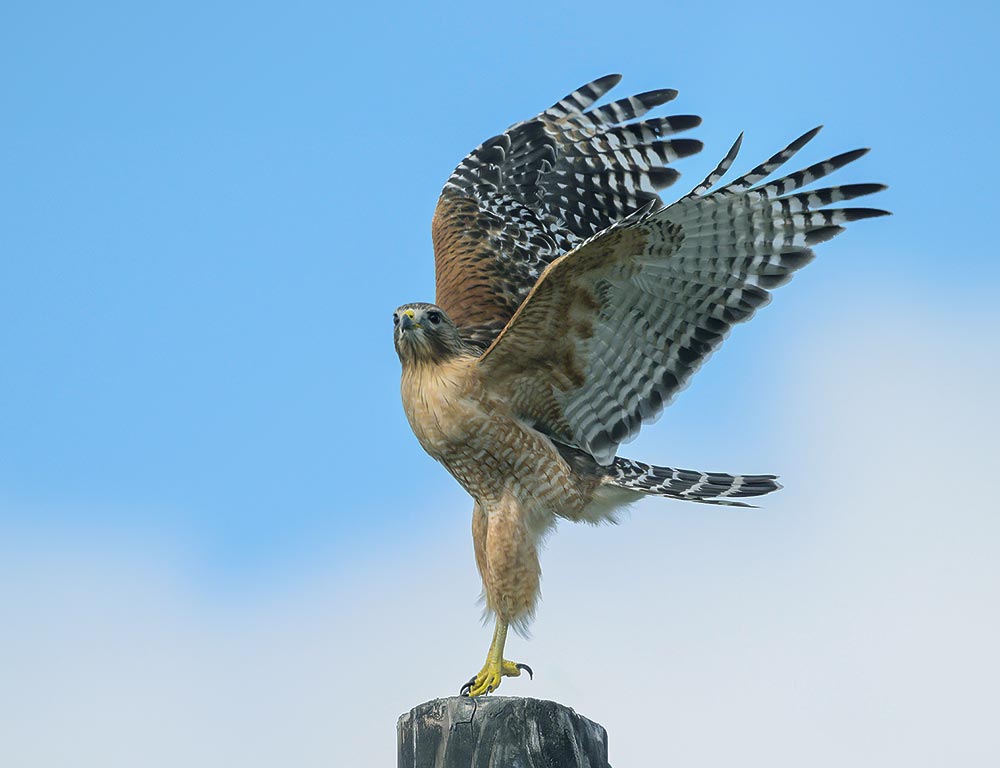
- Scientific name: Buteo lineatus
- Population: Common in woodlands and swamps
- Life span: Up to 20 years
- Size: Length of 17 to 24 inches
- Weight: 1 to 2 pounds
- Food: Small mammals, amphibians, reptiles, birds
- Wingspan: 37 to 43 inches
The Red-Shouldered Hawk is a striking raptor known for its vibrant reddish-brown shoulders. It is commonly found in woodlands and swamps, where it perches in the canopy, searching for prey below.
Red-shouldered hawks have a varied diet, including small mammals, amphibians, reptiles, and birds. Their distinctive vocalizations are often heard in their territories, contributing to the soundscape of Maryland’s forests.
These hawks are territorial during the breeding season, building nests in tall trees. They are known for their elaborate courtship displays involving soaring flights and mutual calling between mates.
Red-shouldered hawks play a crucial role in maintaining the health of forest ecosystems by controlling populations of small mammals and contributing to the overall biodiversity of Maryland’s natural landscapes.
9. Osprey
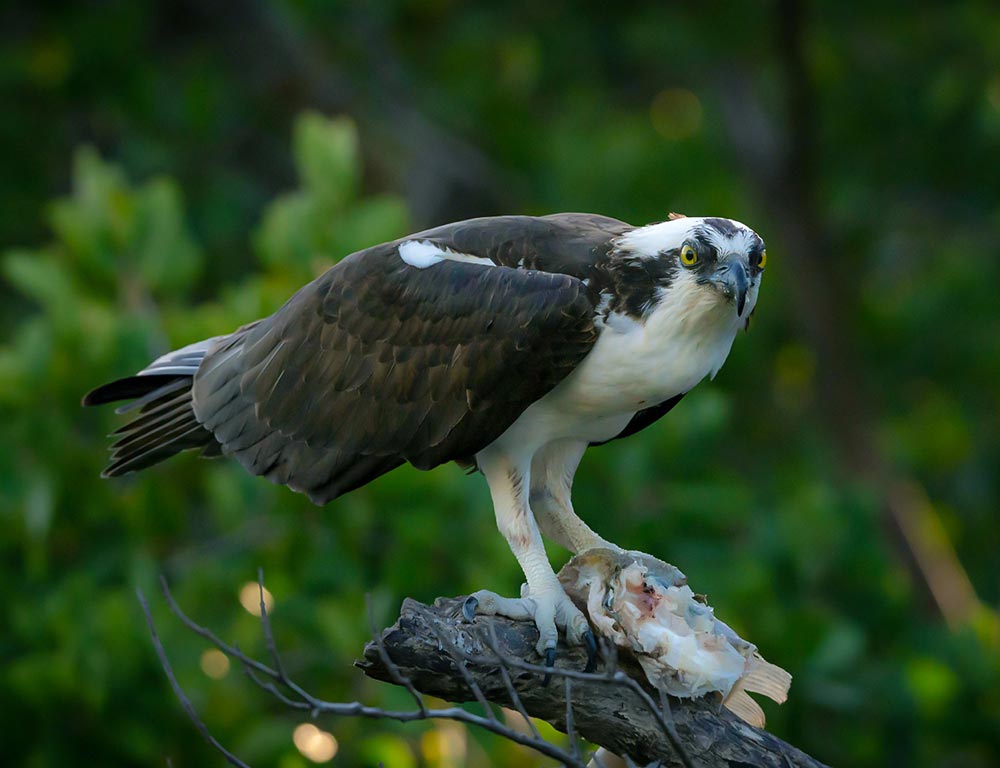
- Scientific name: Pandion haliaetus
- Population: Common near water bodies
- Life span: Up to 25 years
- Size: Length of 21 to 24 inches
- Weight: 2.5 to 4.5 pounds
- Food: Fish
- Wingspan: 54 to 72 inches
The Osprey, often called the “fish hawk,” is a distinctive raptor commonly found near coastal areas, rivers, and lakes. Adapted for a diet of fish, Ospreys have specialized talons for gripping slippery prey.
Their unique hunting style involves hovering over the water and diving feet to snatch fish with remarkable precision. Ospreys are easily identifiable by their white heads and dark eye masks.
These birds build large stick nests on platforms near water, including artificial structures like utility poles and channel markers. Ospreys are known for their strong pair bonds, often returning to the same nesting site year after year.
Successful conservation efforts have contributed to the recovery of Osprey populations, making them a common and welcomed sight in Maryland’s aquatic ecosystems.
Their presence indicates the health of local water bodies and the availability of fish populations.
Wrapping Up
In the diverse landscapes of Maryland, hawks play integral roles, each species contributing uniquely to the ecological balance.
From the soaring Red-Tailed Hawk to the agile Cooper’s Hawk and the elusive Northern Goshawk, these birds of prey exemplify the state’s rich biodiversity.
Whether in wooded habitats, open fields, or coastal regions, hawks showcase adaptability and resilience. Their hunting strategies, nesting behaviours, and migratory patterns reveal the intricate tapestry of Maryland’s ecosystems.
The presence of these majestic raptors is a testament to the importance of conservation efforts in preserving habitats and sustaining the delicate balance of nature.
As we marvel at the beauty and significance of hawks in Maryland, let us remain committed to safeguarding their environments, ensuring a harmonious coexistence with these awe-inspiring creatures.